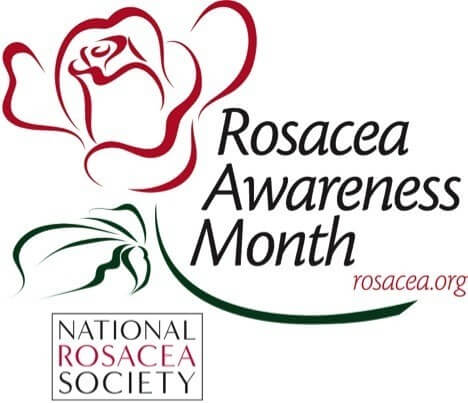 While it is well established that individuals with rosacea often face significant physical, emotional and social challenges, new studies are now showing this widespread disorder may also be associated with increased risks of cardiovascular disease, gastrointestinal disease, certain types of cancer and many other systemic illnesses. The National Rosacea Society (NRS) has designated April as Rosacea Awareness Month to alert the public to the early warning signs of this chronic and conspicuous facial disorder now estimated to affect more than 16 million Americans.
While it is well established that individuals with rosacea often face significant physical, emotional and social challenges, new studies are now showing this widespread disorder may also be associated with increased risks of cardiovascular disease, gastrointestinal disease, certain types of cancer and many other systemic illnesses. The National Rosacea Society (NRS) has designated April as Rosacea Awareness Month to alert the public to the early warning signs of this chronic and conspicuous facial disorder now estimated to affect more than 16 million Americans.
“Recently there have been a growing number of reports associating rosacea with a variety of potentially serious diseases,” said Dr. Richard Odom, professor of clinical dermatology, University of California-San Francisco. “Although it’s important to note that causal relationships between rosacea and these other diseases have not been demonstrated, this provides further reason for people who suspect they may have rosacea to seek diagnosis and appropriate treatment.”
In a recently published analysis of more than 33,000 patients with rosacea in Taiwan, researchers found that rosacea patients were more likely to have coronary artery disease, hypertension, dyslipidemia and peripheral artery occlusive disease.
In the well-known “Nurses Health Study II” – an ongoing biennial questionnaire on the medical history of 116,000 nurses since 1989 – the more than 6,000 women diagnosed with rosacea were 1.59 times more likely to have thyroid cancer and 1.5 times more likely to have basal cell carcinoma than those without rosacea. A recent clinical study of 130 individuals with rosacea at Johns Hopkins University also found a significant association between rosacea and allergies, respiratory diseases, gastroesophageal reflux disease (GERD), diabetes, urogenital diseases and female hormone imbalance.
During Rosacea Awareness Month and throughout the year, the NRS will conduct public education activities to reach the many millions of rosacea sufferers who may not realize they have a medical condition that can be treated, emphasizing the warning signs and urging those who suspect they may have rosacea to see a dermatologist. Bulk quantities of educational materials are available to health professionals for their patients through the NRS website at rosacea.org. Those interested in spreading awareness during the month of April are encouraged to visit the official Rosacea Awareness Month landing page at rosacea.org/ram for ways in which they can participate.
Although rosacea varies from one patient to another, the primary signs may include flushing or transient erythema (redness), persistent or nontransient erythema, papules (bumps) and pustules (pimples), or telangiectasia (visible blood vessels), according to the NRS standard classification of rosacea, developed by a consensus committee and review panel of 17 experts worldwide. Secondary features may include burning or stinging, plaques (raised patches on the skin), a dry appearance, edema (swelling), ocular manifestations and phymatous changes, in which the skin thickens.
The standard subtypes of rosacea reflect the most common patterns of signs and symptoms, and characteristics of more than one subtype may occur at the same time. Subtype 1 (erythematotelangiectatic) rosacea is characterized by flushing and persistent redness on the central portion of the face, while subtype 2 (papulopustular) rosacea also features papules and pustules Subtype 3 (phymatous) rosacea includes thickening of the skin, irregular nodularities and enlargement, especially of the nose. Subtype 4 is ocular rosacea, where the eyes may have a watery or bloodshot appearance, the sensation of a foreign body, burning or stinging, dryness, itching, light sensitivity or a host of other signs and symptoms.
During April and throughout the year, individuals may call the National Rosacea Society’s toll-free telephone number at 1-888-NO-BLUSH for information. The NRS offers Rosacea Review, a newsletter for rosacea patients; a “Rosacea Diary” to help patients identify and avoid lifestyle factors that may trigger flare-ups in their individual cases; and other booklets to help patients understand and manage their condition.
Information is also available by visiting the NRS website at rosacea.org; writing the National Rosacea Society, 111 Lions Dr., Ste. 216, Barrington, Illinois 60010; or via e-mail at info@rosacea.org.